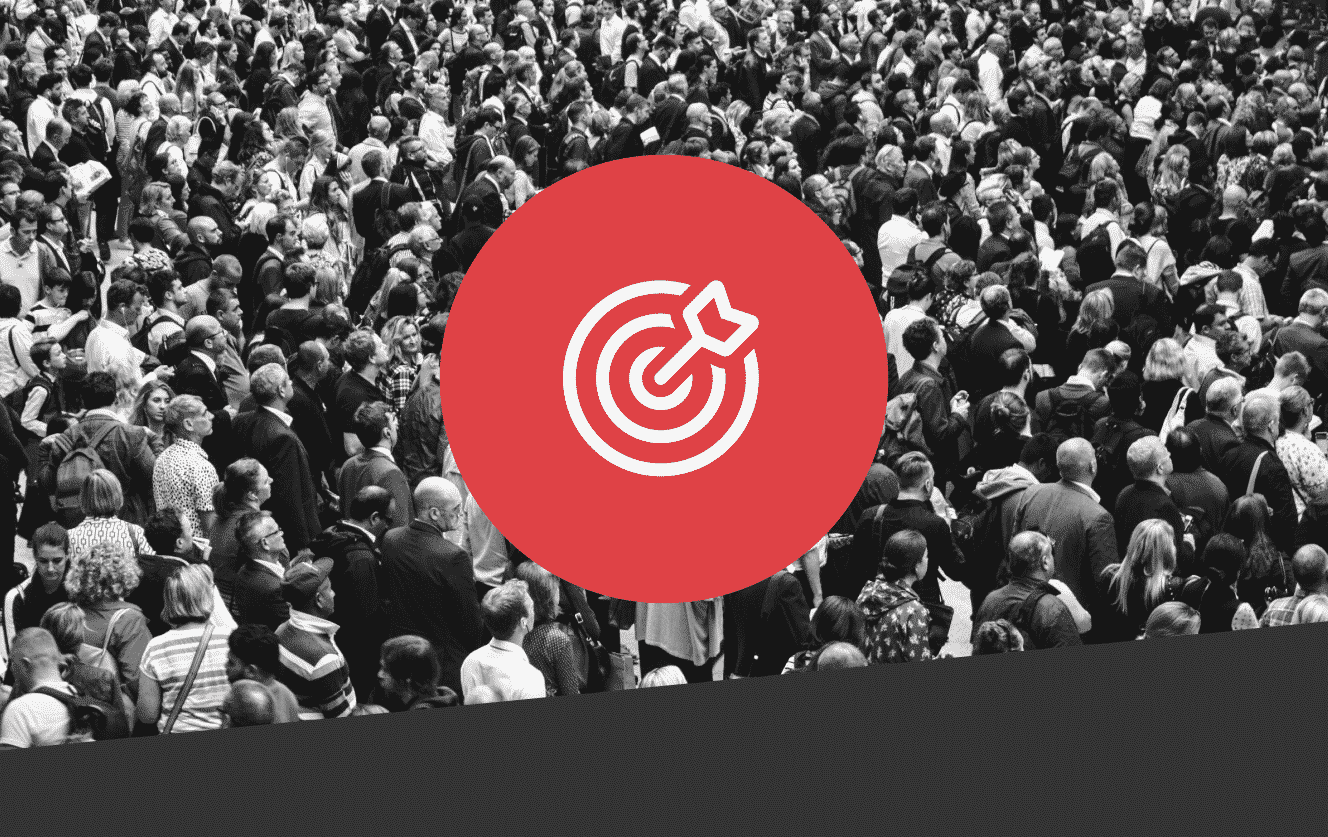Why Every Business Needs a Clear Target Audience
by Saunder Schroeder • March 1, 2022
By Saunder Schroeder
In business, the ultimate purchasing decision is in the hands of the buyer. You can make as many efforts as you’d like to persuade someone to purchase your product or service. However, without meticulously crafted strategies that provide personalized experiences for your ideal customer, you’re unlikely to get far in the highly-competitive enterprise world.
When you have a comprehensive understanding of who you’re talking to, you can craft more compelling messages that will attract new clients. That’s where defining your target audience comes into play — a crucial element for crafting your strategies. On the other hand, if you have no idea who the receptor of your messaging is, you risk wasting your efforts as your messaging will likely fall on deaf ears.
Having no clear target audience means you can’t develop an effective branding strategy. How will you know what your brand should look and feel like if you don’t know who you’re marketing to? If you want to learn what a target audience is and how to identify yours, read on.
What Is a Target Audience?
The target audience definition is quite simple. It refers to a group of people who are likely to become customers of a specific business. This potential customer cluster typically shares similar demographic characteristics, like age, gender, socioeconomic status, location, education, interests, purchasing intent, and more.
Identifying your target audience allows you to build effective marketing strategies that are aimed towards a specific customer. This will save you the resources used in trying to cater to every consumer out there. In marketing, targeting everybody often means you’re not getting your message across, so it’s vital to define who you’re speaking to for more intentional outreach towards those more likely to purchase from you.
Some target audience examples are men, women, teenagers, and children. These groups often share interests like shopping, sports, or cooking. Going beyond the basic demographic information can allow you to understand your target audience better. Learning the role they play in the purchasing journey will give you valuable insights on how to approach them effectively. These roles are often divided into two categories:
- The decision-maker — as the name states, this individual calls the shots when it comes to buying a product or service. Even when an item is targeted towards a certain group, you’ll want your messaging to focus on the person in charge of making the final purchase.
- The supporter — this person may not actually have the power to make the final purchasing decision. However, they will heavily influence the decision-maker’s actions and choices.
For example, if you run an e-commerce company that sells princess costumes, you could guess your target audience is comprised of girls between 3 and 10 years old who are interested in fairy tales. Yet, since this group cannot make the buying decision, your target audience would be their parents although the product is not directly geared towards them.
Target Audience vs. Target Market: What’s the Difference?
In a nutshell, your target market is the group of consumers your company plans to sell to. On the other hand, your target audience is a segment within the target market being served advertisements. Although often used interchangeably, it’s important to note that these concepts don’t mean the same thing. The target audience will always be a subset of the target market, but the target market will not always be the same as the target audience.
Suppose you sell soccer gear. In that case, your target market includes soccer players. However, if you’re advertising a deal on your soccer clits at your Brooklyn location, then your target audience would be soccer players in Brooklyn, not all soccer players across the globe.
Target Audience vs. Customer Persona: How Are the Two Related?
The target audience and the customer persona work together to help you create more effective marketing strategies. Think about it this way: the target audience is a club, and the buyer persona is one of its members. When thinking about the group that comprises your target audience, you’ll see a lot of people with similar characteristics and interests. Yet, if you zoom in to find the customer persona, you’ll see a unique person with goals, wants, and needs of their own.
While a target audience is a set of real people, a buyer persona is a fictional character within this particular group. You can take the person you’ve created based on your ideal customer research and provide them with a background and personality to help you relate with your ideal customer.
A target audience is an outline of your customer base. It includes demographics (age, gender, education, income, etc.) and psychographics (lifestyle, interests, values, etc.) that define the people you aim to draw into your business. These traits together can give you a clearer understanding of how your target audience thinks and the motives behind their behavior.
A buyer persona is much more focused. As mentioned above, it singles out a specific person within your target audience. This meticulously crafted fictional individual represents the archetype of an individual customer. It helps you personify your ideal buyer and get some valuable insights into their buying process to determine how to market to them most effectively.
Buyer personas typically include a thorough definition of the character’s background, goals, and challenges. They also define how your product or service can help solve their specific pain points.
Target audiences were present when marketers came up with buyer personas. They have always been an excellent tool to understand the customer in general terms. Yet, buyer personas emerged as a solution to identify more specific issues and gear your marketing efforts towards showcasing how your offering can help. Both concepts are critical in building better marketing strategies, and they should work together in your marketing plan.
How to Find Your Target Audience
As already noted, learning who your target audience is plays a critical role in crafting more compelling campaigns. But how can you determine who you’re advertising efforts are for? The best way to identify your target audience is by defining what needs your offering helps fulfill. By determining the pain points your product or service can solve, you can better specify who’s suffering from them.
When finding your target audience, you need to be as specific as possible regarding demographics. This way, you’ll ensure your ads cater to the right people. The following steps will help you realize your target audience.
Market Research
Gathering data on your ideal customer is essential when finding your target audience. It will also help you determine the gaps in your industry that your product or service can fill. Learning this information will enable you to craft more compelling ads that highlight your unique value in the market and deliver them to those who may actually be interested in what you have to offer. It will also allow you to pick the proper channels to transmit your message.
Google Analytics: What Will This Tell You?
People are spending more time online these days. In fact, most consumers use search engines like Google to find products and services like yours to fulfill their needs. Google Analytics offers extensive information on the users that visit your site. You can take advantage of this data to determine what channels your audience is coming from and the type of content they’re engaging with the most. Learning this will let you make data-driven decisions in your content strategy to optimize your website and gain more visibility online.
Social Media Analytics and the Insight Provided
When you know who you’re looking for, it’s easier to reach them. Social media analytics will help you determine which platforms your target audience prefers and how they interact with the content you publish on them. They will also give you reliable insight into what your audience cares about the most and what influences their purchasing decision. This will, in turn, enable you to craft relevant content for a more personalized marketing experience.
Look Into Your Current Customer Base
Taking a closer look at those already buying from you is one of the best methods to define your target audience. Studying the people who have shown a genuine interest in your product or service and made a purchase is the fastest route to determining who you want your marketing efforts to appeal to. It can reveal how old your target audience is, where they’re located, what their interests are, and numerous other details. Keep an eye out for their interactions with your brand on social media, or distribute customer surveys through your site to learn more about them.
Broad Audience vs. Exact Audience: Which Is Better?
Targeting a broad audience means you want your marketing efforts to reach as many people as possible. This will help you create brand awareness but will not provide you with the result you want in the long run. A broad audience is the total opposite of a focused customer audience. Marketing broadly will help you get your product or service in front of a large variety of people. However, be aware that not all of them will be interested in buying. This approach might be good for you if you’re relatively new on the market.
An exact audience is a more targeted option that will help you place your offering in front of more relevant eyes. It will allow you to reach a particular demographic that might be interested in your product or service. Directing your marketing efforts towards an exact audience will help you achieve your goals much faster. Plus, you’ll have a clearer idea of what messaging and timing are best to advertise your brand. This will encourage potential customers to find out more about what you sell and ultimately buy from you.
A smaller audience is not necessarily a bad thing when advertising your product or service. It’s actually great news if your goal is to reach only those interested in doing business with you. The type of audience you pick fully depends on what you’re going for. If you want recognition, a broad audience is a good idea. But as your objectives evolve, you can switch to an exact audience to get more specific results.
Benefits of Defining Your Target Audience
Defining your target audience is extremely useful if you seek to advertise more efficiently. Knowing who you’re talking to and how to reach them is vital to avoid wasting your resources targeting the wrong people. While speaking to the general public can be useful from time to time, focusing on a specific segment of the population will allow you to stay more focused and reach potential customers directly.
Here are the primary advantages of having a clear target audience:
Defines the Type of Content You Should Create
Knowing who you’re catering to helps you create a better content strategy. Directly aiming your messaging towards those interested in your product or service will help you boost your sales. That’s why understanding who will receive your message is the first step you should take before deciding what you’ll say, how, and where.
Gives Direction to Your Marketing Strategy
Knowing your target audience lets you determine where to focus your marketing efforts for better results. It’ll allow you and your team to find which channels are ideal to spread the word about your products and services.
Ensures You Are Marketing to Your Intended Audience
If you don’t know who your target audience is, you might end up aiming your marketing efforts towards the wrong people. Doing so will hinder your strategy’s progress and could result in wasted resources.
Why a Clear Target Audience Is Essential to Your Business
Narrowing down your audience is a vital aspect of an effective marketing strategy. It provides you with a better understanding of where you need to place your time, money, and other resources to connect with those more likely to buy from you.
Having a clear target audience is essential to make the most out of your marketing budget and create relevant content that will help your brand gain traction. If you need help identifying your target audience to build more dependable marketing campaigns, contact Disruptive Advertising today.





